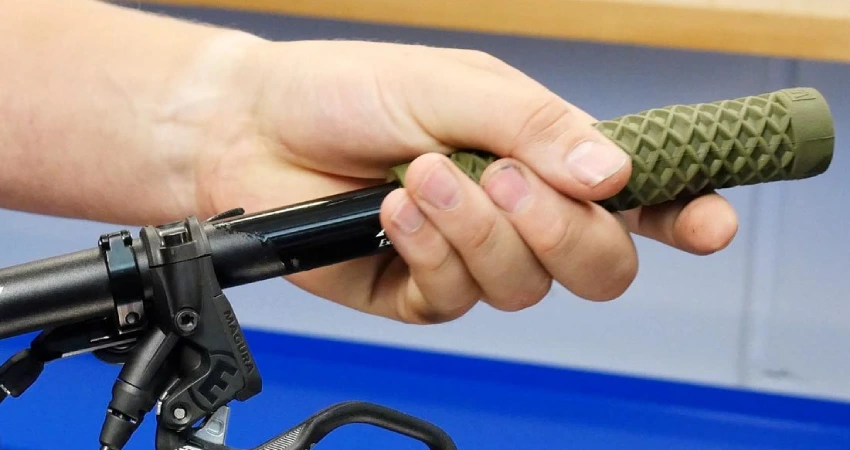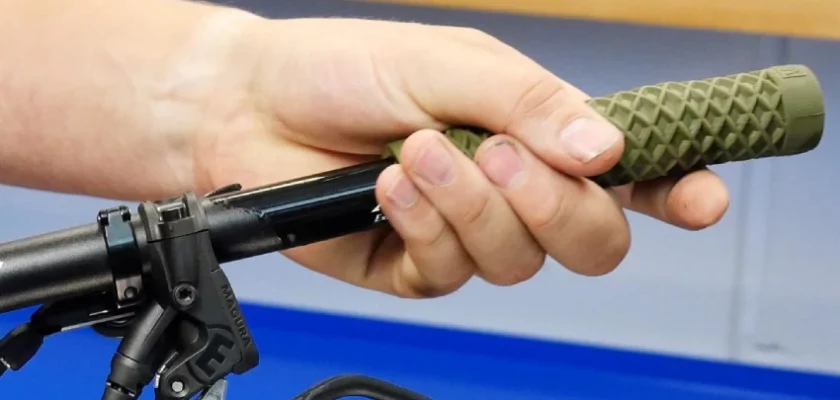Imagine this – you’re cruising down the road on your bike when suddenly, your handlebars start shifting and turning unexpectedly. It’s not only frustrating but also dangerous. However, there’s no need to panic because we have the knowledge and tips you need to remedy this issue.
In the following paragraphs, we will guide you through the various causes of handlebar slippage and provide step-by-step instructions on how to prevent it. So, let’s dive right in and discover how to stop bike handlebars from slipping once and for all!
Prevent Bike Handlebars From Slipping

If you’re an avid cyclist or even a casual rider, you’ll know how important it is for your bike handlebars to stay secured in place. Not only does it affect your overall control and steering, but a slipping handlebar can also compromise your safety on the road.
Understanding the Causes of Handlebar Slippage
Before diving into the solutions, it’s essential to understand why bike handlebars tend to slip. The most common factors contributing to this problem include:
- Lubrication: When overzealous use of lubricants occurs during assembly, it can cause the handlebars to slip.
- Improper Installation: Insufficient tightening, incorrect positioning, or incompatible components can lead to handlebar slippage.
- Excessive Weight: The constant pressure exerted on the handlebars, especially during rough rides or jumps, can gradually loosen the grip and cause them to move.
- Wear and Tear: Over time, the handlebar clamping mechanism, or the handlebar itself, can get worn out, resulting in slipping.
Now let’s explore some effective methods to prevent handlebars from slipping.
1. Proper Clamp Installation
Ensuring a secure clamp installation is crucial to prevent handlebar slippage. Follow these steps carefully:
- Remove any existing handlebar tape or grips from the handlebars.
- Clean the handlebars and the stem clamp area thoroughly to remove any dirt or grease.
- Align the handlebars with the front wheel, ensuring they are straight and at a comfortable angle.
- Tighten the stem bolts slowly and evenly, making sure they are equally torqued. Refer to your bike’s manual or manufacturer’s guidelines for the recommended torque.
- Double-check the alignment and tighten the bolts again, if necessary.
2. Use Friction Paste or Carbon Assembly Compound
To enhance the grip and friction between the handlebars and the stem, consider using friction paste or carbon assembly compound. These compounds are specifically designed to reduce slippage on carbon surfaces.
- Apply a small amount of friction paste or carbon assembly compound evenly on the clamping surface of the stem and handlebars before reinstalling them.
- Make sure to follow the instructions provided by the manufacturer regarding the application and quantity.
Using a friction paste or carbon assembly compound can significantly improve the friction between the surfaces, reducing the chances of handlebar slippage.
3. Carbon Fiber Grip Paste
If you have carbon fiber handlebars, using a carbon fiber grip paste can provide additional security. Carbon fiber grip paste creates a bond between the handlebars and the stem, ensuring a solid connection.
Here’s how you can apply carbon fiber grip paste:
- Remove any existing handlebar tape or grips.
- Clean the handlebars and the stem clamp area thoroughly.
- Apply a small amount of carbon fiber grip paste to the clamping area of the handlebars and the stem.
- Install and tighten the handlebars as per the proper clamp installation instructions mentioned earlier.
- Allow the carbon fiber grip paste to dry according to the manufacturer’s recommendations before riding.
Using carbon fiber grip paste is especially important if you have a full carbon fiber cockpit setup, as it helps prevent slippage and ensures a tight and secure connection.
4. Handlebar Grips and Tape
Another simple and effective way to prevent handlebar slippage is by choosing the right handlebar grips or tape.
- Look for handlebar grips or tape that have a good grip texture and are designed to minimize slippage.
- Ensure that the grips or tape are properly installed, providing enough coverage and cushioning to keep your hands secured.
- Regularly check the grips or tape for wear and tear, as they can affect your grip on the handlebars.
5. Tighten Bolts & Check Periodically
Regular maintenance and inspections are essential to detect and prevent any potential handlebar slipping issues. Here are some tips:
- Periodically check the stem bolts, handlebar clamp bolts, and any other related components to ensure they are tightened appropriately.
- Follow the torque recommendations provided by the manufacturer to avoid over-tightening or under-tightening.
- Inspect for any signs of wear, such as damaged handlebars, worn-out clamps, or compromised grips. Replace any faulty or worn-out parts immediately.
6. Seek Professional Help
If you’re unsure or uncomfortable handling the handlebar slipping issue yourself, it’s always best to seek professional help. Bike shops or qualified bike mechanics have the expertise and tools to diagnose and fix the problem accurately, ensuring your safety on the road.
Remember, maintaining a firm and secure grip on your handlebars is crucial for your overall cycling experience. By following these tips and regularly inspecting your bike, you can prevent handlebar slippage and enjoy a safe and comfortable ride every time.
Frequently Asked Questions
1. What causes bike handlebars to slip?
Riding on rough terrain or applying excessive force on the handlebars can cause them to slip over time.
2. How can I prevent my bike handlebars from slipping?
To prevent handlebar slippage, ensure that the stem bolts are tightened properly and evenly. Additionally, make sure your handlebars are clean and free from grease for a firm grip.
3. Can I use any type of handlebar grips to prevent slipping?
It is recommended to use handlebar grips specifically designed for preventing slipping and improving grip. These grips usually have materials with enhanced friction, such as rubber compounds.
4. What should I do if my handlebars still slip after tightening the bolts?
If your handlebars continue to slip after tightening the bolts, consider using additional methods like grip glue, double-sided tape, or adding a non-slip material between the bar and stem for extra security.
5. How often should I check my handlebars for slippage?
It is advisable to periodically inspect your handlebars for potential slippage, especially after long rides or when riding on rough terrain. Regularly tightening the bolts and maintaining the grip condition will help prevent handlebar slipping.
Final Thoughts
In conclusion, preventing bike handlebars from slipping is crucial for the safety and stability of your rides. By following these simple steps, you can effectively stop this issue. Start by ensuring your handlebars are properly sized and tightened to the appropriate torque.
Make use of grip tape or sandpaper to enhance the grip between the handlebars and stem. Additionally, regularly inspect and maintain your bike’s components for any signs of wear or damage. By taking these precautions, you can enjoy a secure and comfortable biking experience without worrying about handlebar slips.

